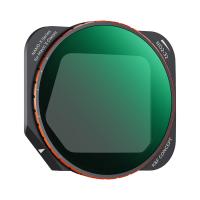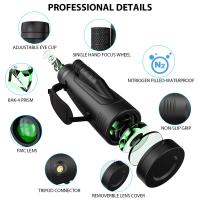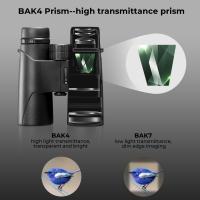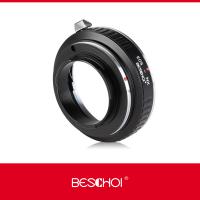How A Compound Microscope Works ?
A compound microscope works by using two lenses to magnify an object. The objective lens is located near the object being viewed and produces a magnified image that is then further magnified by the eyepiece lens. The lenses work together to produce a final magnification that is the product of the magnification of the objective lens and the magnification of the eyepiece lens. The compound microscope also uses a light source to illuminate the object being viewed, which passes through the lenses and into the eye of the viewer. The lenses are carefully designed and positioned to minimize distortion and produce a clear, sharp image. The compound microscope is commonly used in biology and other sciences to view small objects such as cells, bacteria, and other microorganisms.
1、 Optical Components
A compound microscope works by using a series of optical components to magnify an object. The first component is the objective lens, which is located near the object being viewed. The objective lens collects and focuses light from the object onto the second component, the eyepiece lens. The eyepiece lens then magnifies the image formed by the objective lens and projects it onto the retina of the observer's eye.
In addition to the objective and eyepiece lenses, a compound microscope also includes a light source, typically an LED or halogen bulb, to illuminate the object being viewed. The light passes through a condenser lens, which focuses the light onto the object and improves the resolution of the image.
The latest point of view on the workings of a compound microscope involves the use of advanced imaging techniques such as confocal microscopy and super-resolution microscopy. Confocal microscopy uses a laser to scan the object being viewed, producing a series of images that can be reconstructed into a three-dimensional image. Super-resolution microscopy uses specialized lenses and techniques to overcome the diffraction limit of light, allowing for higher resolution images than traditional microscopy.
Overall, the optical components of a compound microscope work together to magnify and illuminate objects, allowing for detailed observation and analysis. With the development of advanced imaging techniques, the capabilities of compound microscopes continue to expand, enabling researchers to explore the microscopic world in greater detail.

2、 Magnification and Resolution
Magnification and Resolution are the two key principles that govern how a compound microscope works. Magnification refers to the ability of the microscope to enlarge an object, while resolution refers to the ability to distinguish between two closely spaced objects.
In a compound microscope, light passes through the specimen and is then magnified by two lenses: the objective lens and the eyepiece lens. The objective lens is located close to the specimen and produces a magnified image, which is then further magnified by the eyepiece lens. The total magnification is the product of the magnification of the objective lens and the eyepiece lens.
However, magnification alone is not enough to produce a clear image. The resolution of the microscope is limited by the wavelength of light used to illuminate the specimen. This means that two objects that are closer together than the wavelength of light will appear as a single object. To overcome this limitation, scientists have developed techniques such as confocal microscopy and super-resolution microscopy, which use specialized optics and computer algorithms to improve resolution beyond the diffraction limit of light.
In recent years, advances in technology have led to the development of new types of microscopes, such as the electron microscope and the scanning probe microscope. These microscopes use different types of radiation, such as electrons or photons, to image specimens at much higher resolutions than traditional light microscopes.
In conclusion, the principles of magnification and resolution are fundamental to the operation of a compound microscope. While the resolution of traditional light microscopes is limited by the wavelength of light, new technologies are constantly being developed to push the limits of what is possible in microscopy.

3、 Illumination
Illumination is a crucial component of how a compound microscope works. The microscope uses a light source to illuminate the specimen being observed. The light passes through the condenser lens, which focuses the light onto the specimen. The specimen then reflects or absorbs some of the light, which is then magnified by the objective lens and the eyepiece lens.
In recent years, advancements in illumination technology have greatly improved the capabilities of compound microscopes. LED lights have replaced traditional light sources, providing brighter and more consistent illumination. Additionally, fluorescence microscopy has become a popular technique for observing specific structures within a specimen. This technique involves using fluorescent dyes that emit light when excited by a specific wavelength of light. The microscope can then filter out all other wavelengths of light, allowing for the observation of only the fluorescent structures.
Another recent development in illumination is the use of super-resolution microscopy. This technique uses specialized illumination patterns and algorithms to overcome the diffraction limit of light, allowing for the observation of structures smaller than previously thought possible. This has opened up new avenues of research in fields such as cell biology and nanotechnology.
In conclusion, illumination is a critical component of how a compound microscope works, and recent advancements in illumination technology have greatly expanded the capabilities of this essential scientific tool.

4、 Focusing Mechanisms
One of the key components of a compound microscope is the focusing mechanism. This mechanism allows the user to adjust the focus of the microscope to obtain a clear image of the specimen being observed. There are two main types of focusing mechanisms used in compound microscopes: coarse focus and fine focus.
Coarse focus is used to make large adjustments to the focus of the microscope. This is typically done by moving the stage up or down using a coarse focus knob. Fine focus, on the other hand, is used to make small adjustments to the focus of the microscope. This is typically done by moving the stage up or down using a fine focus knob.
In addition to these traditional focusing mechanisms, there have been recent advancements in microscope technology that have led to the development of new focusing mechanisms. For example, some microscopes now use autofocus technology to automatically adjust the focus of the microscope based on the specimen being observed. This technology uses sensors to detect changes in the distance between the microscope and the specimen and adjusts the focus accordingly.
Overall, the focusing mechanism is a critical component of a compound microscope that allows users to obtain clear and detailed images of specimens. As technology continues to advance, we can expect to see further improvements in the focusing mechanisms used in microscopes.






























